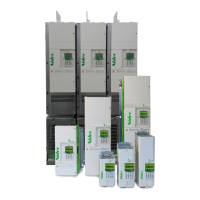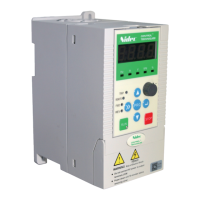AD3000 5 – MODBUS TCP
NIDEC ASI S.P.A. – AD3000 COMMUNICATION MANUAL
IMAD30007EN 31
5.5 Errors returned in the Modbus protocol (Modbus exception code)
Except for broadcast messages, when a master (client) device sends a query to a slave (server) device, it expects a response.
If a transmission is not successful, the response contains a code indicating the type of error detected. The codes are listed in the following table.
The function code receiv ed in the query is not an action allowed for the slav e (serv er). If a Poll Program
Complete command has been issued, this code indicates that no program function preceded it.
The data address receiv ed in the query is not an acceptable address for the slav e (serv er).
A v alue contained in the query data field is not an acceptable v alue for the slav e (serv er).
An irrev ersible error occurred w hile the slav e (serv er) w as try ing to perform the requested action.
Table 5.5 - Error codes
5.6 Modbus TCP configuration parameters
Remember that it is necessary to configure all the Ethernet network parameters, ETHERNET - TCP/IP [88.00] family.
The Modbus TCP communication enabling is performed by setting the Modbus En [82.01] parameter.
All the important parameters of the MODBUS [82.00] family are:
Modbus enable
- Off [0]
- RTU [1]
- TCP [2]
- RTU & TCP [3]
Timeout for alarm 53 (0 = disabled)
Selection of input aux iliary ex change
area (from Modbus to Driv e)
- Off [0]
- 1 Data Ex change Area [1]
- 2 Data Ex change Area [2]
5.7 Loss of Modbus communication
If the “RTU” communication mode has been chosen, if the communication fails, the system generates the ModbusEr alarm.
The action that shall generate such error is determined by the setting chosen in the Modbus Slave Error [36.53] parameter.
5.8 Control parameterisation via Modbus
The drive configuration parameter setting can be implemented via the Modbus using the PKW parameterisation data of messages exchanged between
master (client) and slave (server) (drive). Such data are used by the Modbus master to transmit or receive slave configuration parameter values;
through PKW data the chosen parameterisation is automatically stored.

